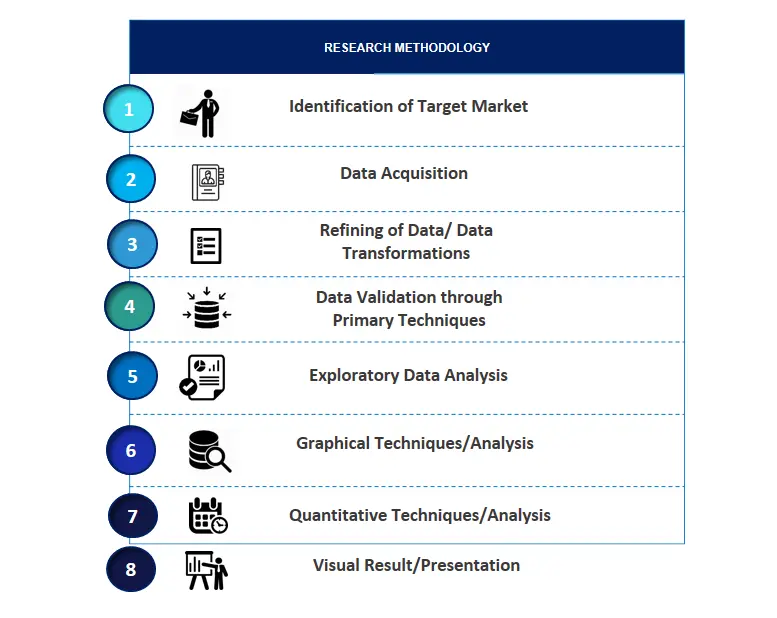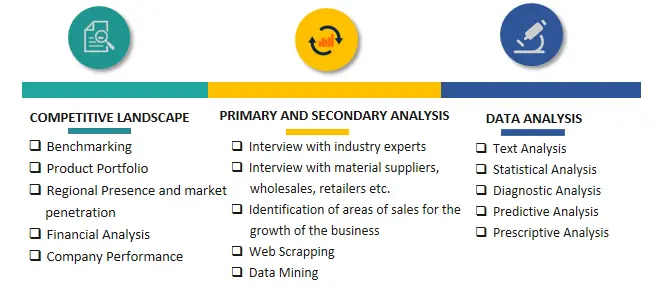
Almond Protein Market Growth, Size, Trends, Revenue, Challenges and Future Outlook
Almond Protein Market Growth, Size, Trends Analysis - By Application - Regional Outlook, Competitive Strategies and Segment Forecast to 2033
| Published: Dec-2024 | Report ID: FOOD24139 | Pages: 1 - 251 | Formats*: |
| Category : Food & Beverages | |||
- The newest seasonal product from Blue Diamond, Frosted Brownie Almonds, was released in October 2024 to celebrate the start of the holiday season.
- A cooperation to turn almond processing waste into renewable energy was announced in September 2024 by Divert, Inc. and Blue Diamond Growers. Blue Diamond will use Divert's cutting-edge technologies to turn low-value waste into electricity, helping California reach its 2045 net-zero carbon emissions target.


| Report Metric | Details |
| Market size available for years | 2020-2033 |
| Base year considered | 2023 |
| Forecast period | 2024-2033 |
| Segments covered | By Application. |
| Regions covered | North America, Asia-Pacific, Latin America, Middle East & Africa and Europe. |
| Companies Covered | All Organic Treasures GmbH, Austrade, Inc. Food Ingredients, Blue Diamond Global Ingredients Division, Herblink Biotech Corporation, Noosh Brands, Sabinsa Corporation, Z-Company BV. |
- Health-conscious Consumers
- Vegan and Plant-Based Diet Adherents
- Athletes and Fitness Enthusiasts
- Food and Beverage Manufacturers
- Nutraceutical Companies
- Dairy Alternative Product Consumers
- Vegan and Plant-Based Product Retailers
| By Application: |
- Global Almond Protein Market Size (FY’2024-FY’2033)
- Overview of Global Almond Protein Market
- Segmentation of Global Almond Protein Market By Application (Bakery, Nutritional Supplements, Beverages, Confectionery, Others)
- Statistical Snap of Global Almond Protein Market
- Expansion Analysis of Global Almond Protein Market
- Problems and Obstacles in Global Almond Protein Market
- Competitive Landscape in the Global Almond Protein Market
- Impact of COVID-19 and Demonetization on Global Almond Protein Market
- Details on Current Investment in Global Almond Protein Market
- Competitive Analysis of Global Almond Protein Market
- Prominent Players in the Global Almond Protein Market
- SWOT Analysis of Global Almond Protein Market
- Global Almond Protein Market Future Outlook and Projections (FY’2024-FY’2033)
- Recommendations from Analyst
1.1. Scope of the report1.2. Market segment analysis
2.1. Research data source
2.1.1. Secondary Data2.1.2. Primary Data2.1.3. SPERs internal database2.1.4. Premium insight from KOLs
2.2. Market size estimation
2.2.1. Top-down and Bottom-up approach
2.3. Data triangulation
4.1. Driver, Restraint, Opportunity and Challenges analysis
4.1.1. Drivers4.1.2. Restraints4.1.3. Opportunities4.1.4. Challenges
4.2. COVID-19 Impacts of the Global Almond Protein Market
5.1. SWOT Analysis
5.1.1. Strengths5.1.2. Weaknesses5.1.3. Opportunities5.1.4. Threats
5.2. PESTEL Analysis
5.2.1. Political Landscape5.2.2. Economic Landscape5.2.3. Social Landscape5.2.4. Technological Landscape5.2.5. Environmental Landscape5.2.6. Legal Landscape
5.3. PORTERs Five Forces
5.3.1. Bargaining power of suppliers5.3.2. Bargaining power of buyers5.3.3. Threat of Substitute5.3.4. Threat of new entrant5.3.5. Competitive rivalry
5.4. Heat Map Analysis
6.1. Global Almond Protein Market Manufacturing Base Distribution, Sales Area, Product Type6.2. Mergers & Acquisitions, Partnerships, Product Launch, and Collaboration in Global Almond Protein Market
7.1. Global Almond Protein Market Size, Share and Forecast, By Application, 2020-20267.2. Global Almond Protein Market Size, Share and Forecast, By Application, 2027-20337.3. Bakery7.4. Nutritional Supplements7.5. Beverages7.6. Confectionery7.7. Others
8.1. Global Almond Protein Market Size and Market Share
9.1. Global Almond Protein Market Size and Market Share By Region (2020-2026)9.2. Global Almond Protein Market Size and Market Share By Region (2027-2033)9.3. Asia-Pacific
9.3.1. Australia9.3.2. China9.3.3. India9.3.4. Japan9.3.5. South Korea9.3.6. Rest of Asia-Pacific
9.4. Europe
9.4.1. France9.4.2. Germany9.4.3. Italy9.4.4. Spain9.4.5. United Kingdom9.4.6. Rest of Europe
9.5. Middle East and Africa
9.5.1. Kingdom of Saudi Arabia9.5.2. United Arab Emirates9.5.3. Qatar9.5.4. South Africa9.5.5. Egypt9.5.6. Morocco9.5.7. Nigeria9.5.8. Rest of Middle-East and Africa
9.6. North America
9.6.1. Canada9.6.2. Mexico9.6.3. United States
9.7. Latin America
9.7.1. Argentina9.7.2. Brazil9.7.3. Rest of Latin America
10.1. All Organic Treasures GmbH
10.1.1. Company details10.1.2. Financial outlook10.1.3. Product summary10.1.4. Recent developments
10.2. Austrade, Inc. Food Ingredients
10.2.1. Company details10.2.2. Financial outlook10.2.3. Product summary10.2.4. Recent developments
10.3. Blue Diamond Global Ingredients Division
10.3.1. Company details10.3.2. Financial outlook10.3.3. Product summary10.3.4. Recent developments
10.4. Herblink Biotech Corporation
10.4.1. Company details10.4.2. Financial outlook10.4.3. Product summary10.4.4. Recent developments
10.5. Noosh Brands
10.5.1. Company details10.5.2. Financial outlook10.5.3. Product summary10.5.4. Recent developments
10.6. Sabinsa Corporation
10.6.1. Company details10.6.2. Financial outlook10.6.3. Product summary10.6.4. Recent developments
10.7. Z-Company BV
10.7.1. Company details10.7.2. Financial outlook10.7.3. Product summary10.7.4. Recent developments
10.8. Others
SPER Market Research’s methodology uses great emphasis on primary research to ensure that the market intelligence insights are up to date, reliable and accurate. Primary interviews are done with players involved in each phase of a supply chain to analyze the market forecasting. The secondary research method is used to help you fully understand how the future markets and the spending patterns look likes.
The report is based on in-depth qualitative and quantitative analysis of the Product Market. The quantitative analysis involves the application of various projection and sampling techniques. The qualitative analysis involves primary interviews, surveys, and vendor briefings. The data gathered as a result of these processes are validated through experts opinion. Our research methodology entails an ideal mixture of primary and secondary initiatives.



Frequently Asked Questions About This Report
PLACE AN ORDER
Year End Discount
Sample Report
Pre-Purchase Inquiry
NEED CUSTOMIZATION?
Request CustomizationCALL OR EMAIL US
100% Secure Payment






Related Reports
Our Global Clients
Our data-driven insights have influenced the strategy of 200+ reputed companies across the globe.




















